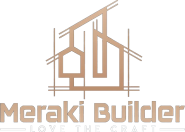As environmental sustainability becomes a priority for homeowners and builders alike, the roofing industry is evolving to meet the demand for more eco-friendly options. Sustainable roofing is not only about reducing the environmental impact of your home but also about improving its energy efficiency and durability. This blog post highlights the best sustainable roofing options available today, detailing their benefits and how they contribute to a more energy-efficient and environmentally friendly home.
Understanding Eco-Friendly Roofing
Eco-friendly roofing involves materials and designs that minimize environmental impact, enhance energy conservation, and are durable enough to reduce the need for frequent replacements. Here are some of the top sustainable roofing materials and technologies that are making a difference:
1. Solar Roof Tiles
Solar roof tiles are one of the most innovative eco-friendly roofing options. Unlike traditional solar panels, these tiles integrate seamlessly with the rest of the roofing, providing a more aesthetic and less obtrusive way to harness solar energy. They convert sunlight into electricity, reducing reliance on non-renewable energy sources and potentially lowering electricity bills significantly.
2. Cool Roofs
Cool roofs are designed to reflect more sunlight and absorb less heat than a standard roof, thanks to their highly reflective type of paint, sheet covering, or reflective tiles or shingles. This property helps maintain lower roof temperatures, reducing energy costs by keeping homes cooler during the hot months without overworking the air conditioning systems.
3. Green Roofs
Also known as living roofs, green roofs are covered with vegetation, which helps insulate the home, reduce stormwater runoff, improve air quality, and decrease the heat island effect in urban areas. Green roofs not only provide these environmental benefits but also add a unique visual element to buildings.
4. Recycled Shingles
Made from recycled materials such as plastic, rubber, or wood fiber, recycled shingles are an environmentally responsible choice. These materials are often sourced from post-consumer waste, reducing landfill use. Recycled shingles are durable, offering similar or even superior performance compared to traditional shingles, and they are available in various styles and colors.
5. Metal Roofing
Metal roofs are highly durable, lasting 50 years or more, which minimizes the need for replacement. They are also 100% recyclable at the end of their life. Metal roofs reflect solar radiant heat, which can help reduce cooling costs by 10-25%. Their lightweight nature also puts less stress on building structures.
Benefits of Eco-Friendly Roofing
- Energy Efficiency: Many eco-friendly roofing materials are designed to reflect solar energy or improve insulation, leading to significant energy savings.
- Durability: Sustainable roofing materials are often more durable than traditional materials, meaning less frequent replacements and repairs.
- Reduced Environmental Impact: By using recycled materials and reducing energy consumption, eco-friendly roofs help decrease the carbon footprint of your home.
- Increased Home Value: Eco-friendly upgrades can increase the market value of your home, making it more appealing to environmentally conscious buyers.
Investing in eco-friendly roofing is a practical approach to contribute to environmental sustainability while also benefiting economically from energy savings and enhanced durability. As the technology evolves, the options for sustainable roofing solutions continue to expand, offering homeowners various ways to make their homes more environmentally friendly and efficient. When considering a new roof, think about the long-term impact of your choice on both your wallet and the planet.








